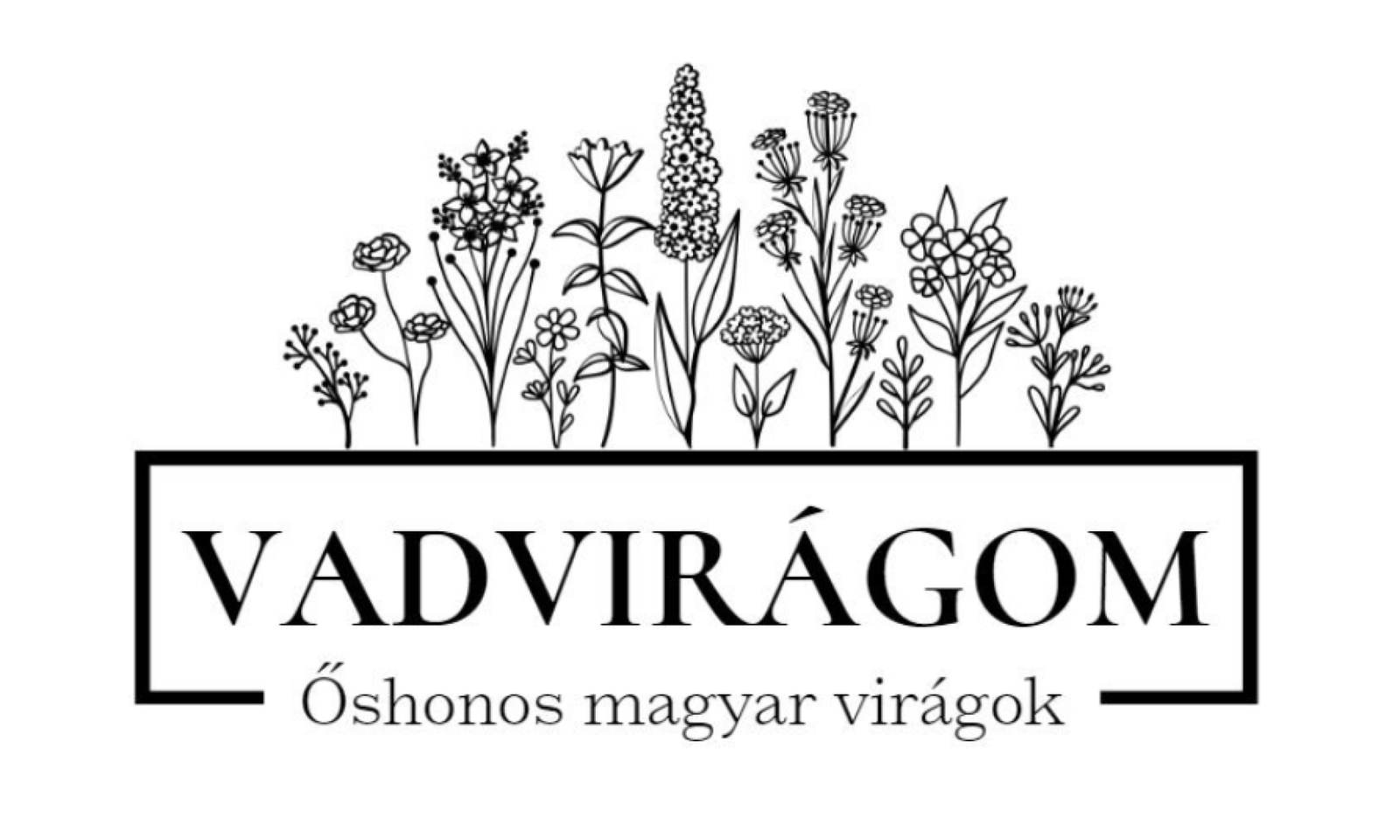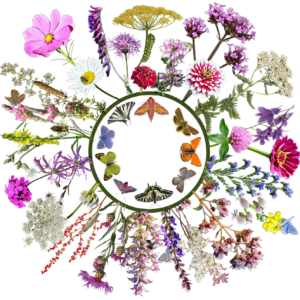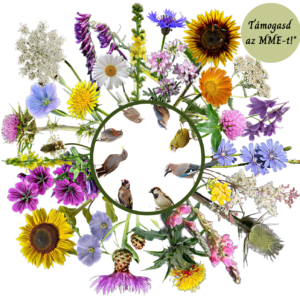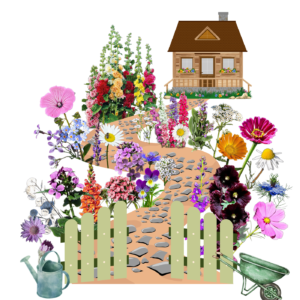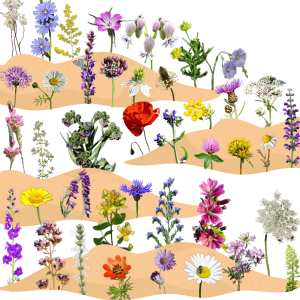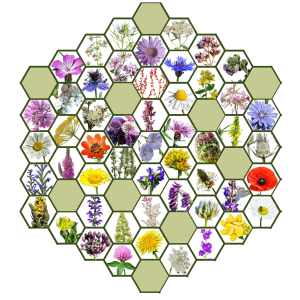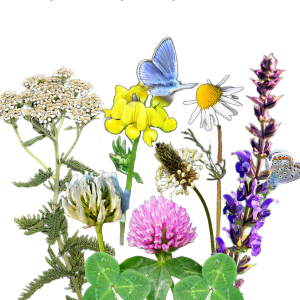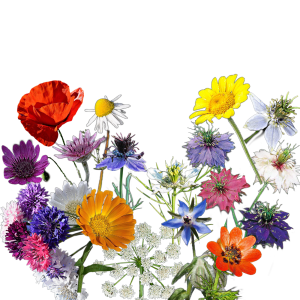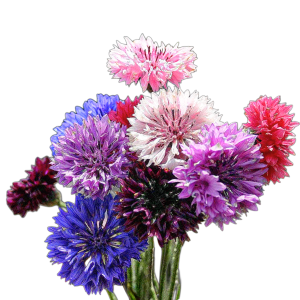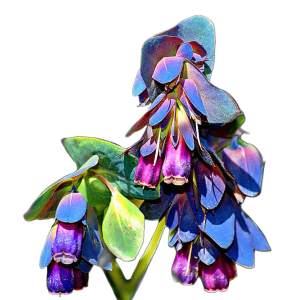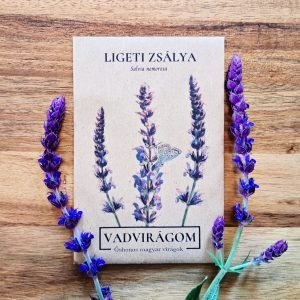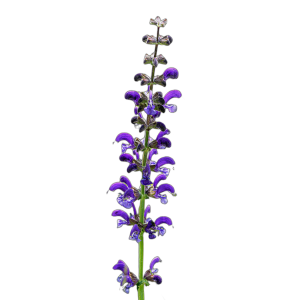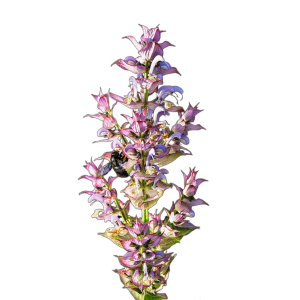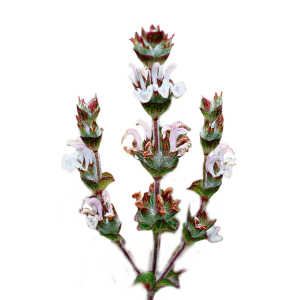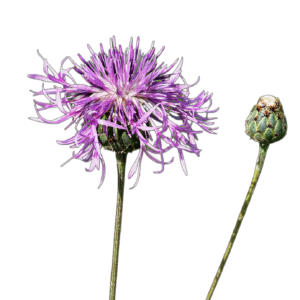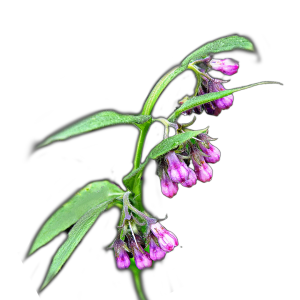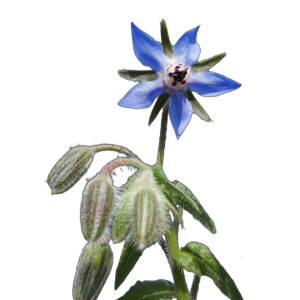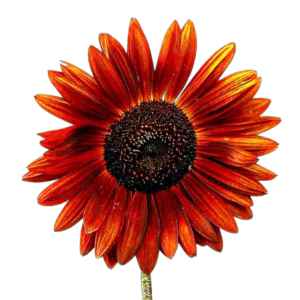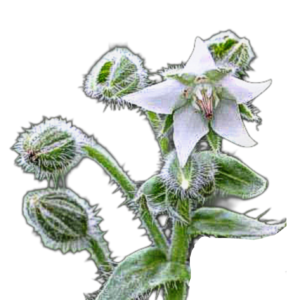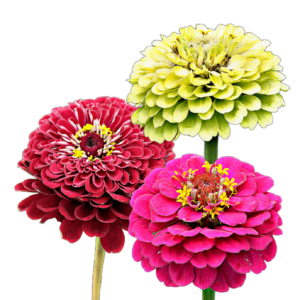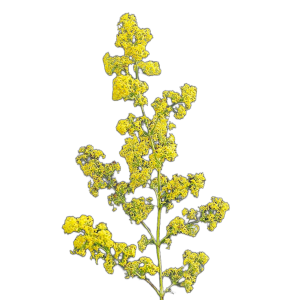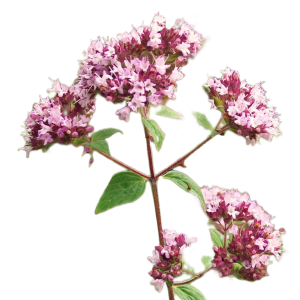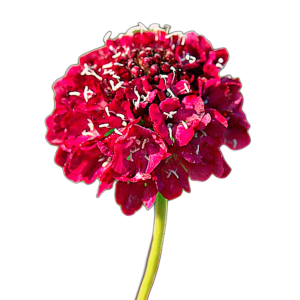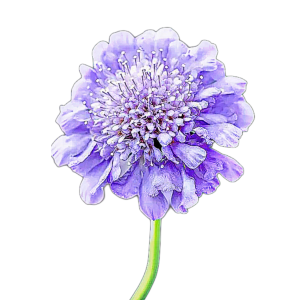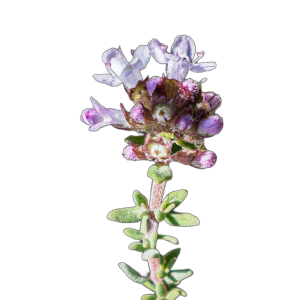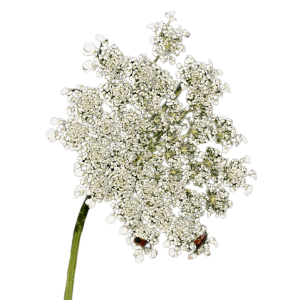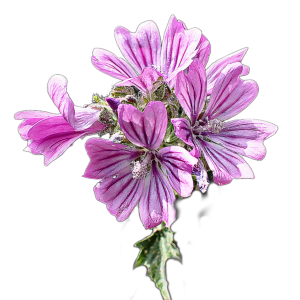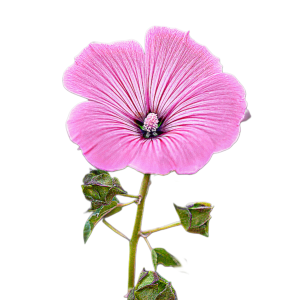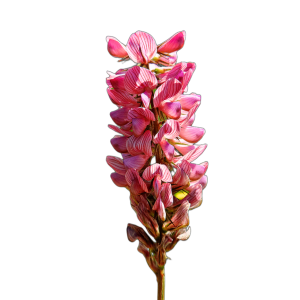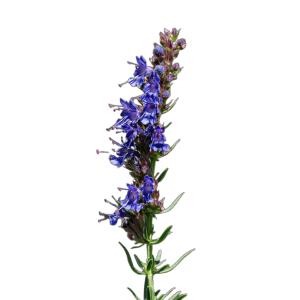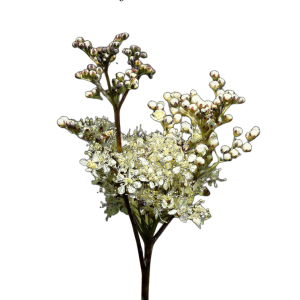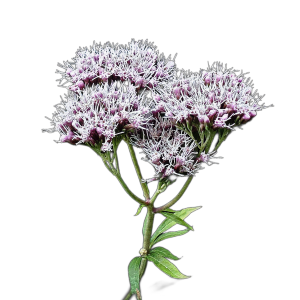-
-
Select options
There are several variations of this product. The variants can be selected on the product page
- Add to wishlistAdd to wishlist
- butterflies' favourite, butterfly attractant seed mix, seed mix
MAPMAKER 2.0 - caterpillar, hemp and moth seed mix (NEW!)
- 950 Ft - 8.000 Ft
- Butterfly Lure 2.0 is a seed mix for caterpillars, butterflies and sedges, the result of 1 year of research, which has resulted in a seed mix of the best nectar-producing and nutritious plant species. The majority of moths and sedges are very selective when they are caterpillars and have only a few or only 1 or 1 species of food plant: this is the plant on which the moth lays its eggs and the leaves of this plant are eaten by the caterpillars.
Add to wishlistAdd to wishlist -
Select options
There are several variations of this product. The variants can be selected on the product page
-
-
Select options
There are several variations of this product. The variants can be selected on the product page
- Add to wishlistAdd to wishlist
- bird attractant, seed mix
BIRD FOOD - seed mix for winter feeding of birds (prickly)
- 2.500 Ft - 13.000 Ft
- The idea for the Bird Lure seed mix came from the tengelicidae, as I watched tengelicidae come to a stray sunflower left outside a window for weeks to feast. Many species of birds, including blue tits, coal tits, cherry warblers and those with beaks suited to such things like this like to peck out the half-ripe/mature seeds from the open, seed-ripened flowers. In addition, many of our bird species are insect prey, which feed on pollen and...
Add to wishlistAdd to wishlist -
Select options
There are several variations of this product. The variants can be selected on the product page
-
-
Select options
There are several variations of this product. The variants can be selected on the product page
- Add to wishlistAdd to wishlist
- bird attractant, seed mix
BIRD FEEDER 2.0 - seed mix for winter feeding of birds (petting)
- 2.500 Ft - 13.000 Ft
- The idea for the Bird Lure seed mix came from the tengelicidae, as I watched tengelicidae come to a stray sunflower left outside a window for weeks to feast. Many species of birds, including blue tits, coal tits, cherry warblers and those with beaks suited to such things like this like to peck out the half-ripe/mature seeds from the open, seed-ripened flowers. In addition, many of our bird species are insect prey, which feed on pollen and...
Add to wishlistAdd to wishlist -
Select options
There are several variations of this product. The variants can be selected on the product page
-
-
Select options
There are several variations of this product. The variants can be selected on the product page
- Add to wishlistAdd to wishlist
- seed mix, nostalgic seed mix, cut flower
MAMA GARDEN - nostalgic seed mix (NEW!)
- 950 Ft - 5.000 Ft
- The Mama's Garden nostalgic seed mix is a true love project, reaching back to the roots where many of our passion for flowers began: our Mama's garden. With this seed mix I would like to thank and pay tribute to our grandmothers, for letting us learn from them about gardening practices, for introducing us to those nostalgic, now partly forgotten flowers and for laying the foundations for our passion for gardening. So I have chosen species that for me are typical of the old...
Add to wishlistAdd to wishlist -
Select options
There are several variations of this product. The variants can be selected on the product page
-
-
Select options
There are several variations of this product. The variants can be selected on the product page
- Add to wishlistAdd to wishlist
- butterflies' favourite, seed mix
BOKRÉTA - cut flower seed mix (NEW!)
- 950 Ft - 4.000 Ft
- The Bokréta cut flower seed mix is designed for flower and bouquet lovers. It's also a perfect gift for women's day or mother's day :) For the price of half a bunch, we will have a lot of bunches of flowers, not only in the year of sowing, but also in the years to come. The Bokréta seed mix is a mixture of 25 species of annual, biennial and perennial flowers, with a predominance of...
Add to wishlistAdd to wishlist -
Select options
There are several variations of this product. The variants can be selected on the product page
-
-
Select options
There are several variations of this product. The variants can be selected on the product page
- Add to wishlistAdd to wishlist
- 40 native Hungarian wild flowers for sandy soil, seed mix
BUCKALAKO seed mix
- 950 Ft - 16.000 Ft
- By popular demand, the wildflower meadow or beehive seed mix for sandy soil is ready! Buckalako seed mix contains 40 native Hungarian species that are drought tolerant and thrive in sandy soils. During the germination period it is important to keep the area moist: in autumn and spring for autumn sowing and in spring for spring sowing. Once the seedlings have germinated, they require no or very minimal watering (of course, months of drought...
Add to wishlistAdd to wishlist -
Select options
There are several variations of this product. The variants can be selected on the product page
-
-
Select options
There are several variations of this product. The variants can be selected on the product page
- Add to wishlistAdd to wishlist
- 30 native Hungarian wild flowers, seed mix
BEPORZÓNA 3.0 - beekeeping seed mix
- 900 Ft - 16.000 Ft
- One of the middle members of the 10-60 species blend series, Beporzóna 3.0 is a seed blend of 30 indigenous Hungarian beekeepers. Wild your garden with this seed mix and welcome beneficial pollinators to your garden! The more species a mix contains, the more native pollinator species it supports. This mix has been developed with the above in mind, and we have also tried to select species that many specialist...
Add to wishlistAdd to wishlist -
Select options
There are several variations of this product. The variants can be selected on the product page
-
-
Select options
There are several variations of this product. The variants can be selected on the product page
- Add to wishlistAdd to wishlist
- 40 Hungarian and European wild flowers, seed mix
NEK-TÁR 3.0 - beekeeping seed mix
- 950 Ft - 17.500 Ft
- Make your garden wild with this annual-biennial-annual-evergreen bee-feeding seed mix of 40 species of Hungarian and European wildflowers and welcome beneficial pollinators to your garden! In addition to the Beporzone of 30 native wildflower species, this mix also includes some great pollinator-attracting Mediterranean wildflowers such as borage, marigold, garden ladybird and anise. It also contains several annual European wildflower species,...
Add to wishlistAdd to wishlist -
Select options
There are several variations of this product. The variants can be selected on the product page
-
-
Select options
There are several variations of this product. The variants can be selected on the product page
- Add to wishlistAdd to wishlist
- 50 species of native wild flowers, seed mix
BEES NO? - beekeeping seed mix
- 950 Ft - 19.000 Ft
- One of the larger members of the 10-60 species beekeeping mixture series, Méh ne? is a native Hungarian beekeeping seed mixture of 50 species (the largest native Hungarian member of the series). Wild your garden with this seed mix and welcome beneficial pollinators to your garden! The more species a mix contains, the more native pollinator species it supports. This blend has been developed with the above in mind,...
Add to wishlistAdd to wishlist -
Select options
There are several variations of this product. The variants can be selected on the product page
-
-
Select options
There are several variations of this product. The variants can be selected on the product page
- Add to wishlistAdd to wishlist
- 60 native European wild flowers, seed mix
ZÜMMÖGDE - beekeeping seed mix
- 950 Ft - 20.500 Ft
- The largest member of the 10-60 species beekeeping seed mixture series, Zümmögde, is a native Hungarian beekeeping seed mixture of 60 species (the largest member of the series). Wild your garden with this seed mix and welcome beneficial pollinators to your garden! The more species a mix contains, the more native pollinator species it supports. This mix has been developed with the above in mind, and we have tried to include...
Add to wishlistAdd to wishlist -
Select options
There are several variations of this product. The variants can be selected on the product page
-
-
Select options
There are several variations of this product. The variants can be selected on the product page
- Add to wishlistAdd to wishlist
- can be sown in grass, seed mix, beekeeping, native grassland, native
FRUITFUL FURRY seed mix
- 2.500 Ft - 7.500 Ft
- Want a beautiful, colourful and thriving lawn? With a mixture of 7 native wildflowers, the Flowering Native Lawn is guaranteed to be a hit with pollinators: the catkin, sage and hornwort are very popular with butterflies, while the white testicle provides food for short-tongued pollinators such as the house bee and the red testicle for long-tongued bees, including bumblebees. Like all butterfly...
Add to wishlistAdd to wishlist -
Select options
There are several variations of this product. The variants can be selected on the product page
-
-
Select options
There are several variations of this product. The variants can be selected on the product page
- Add to wishlistAdd to wishlist
- 15 annual Hungarian and European wildflowers for the balcony or window box, seed mix
Oh, ROMERO annual seed mix - also for the balcony
- 950 Ft - 2.750 Ft
- What? Bee-keeper on balcony or balcony? Yes! Just like the highly successful Yarrow seed mix, you can make your garden, balcony or balcony go wild with the annual seed mix of 13 native Hungarian and European species of Oh, Romeo and welcome beneficial pollinators to your garden! Can also be sown in a balcony box. This mix also includes some very colourful, cultivated varieties of some of our favourite flowers. It's made up of easy-to-grow varieties, so if you...
Add to wishlistAdd to wishlist -
Select options
There are several variations of this product. The variants can be selected on the product page
-
-
Add to basket
- Add to wishlistAdd to wishlist
- biennial
Common burdock (Arctium lappa) 0,5g, ~30 seeds
- 875 Ft
- The common burdock (Arctium lappa) is a native Hungarian wildflower, which attracts hordes of pollinators with its impressive flowers that grow the year after sowing. Many people mistake it for thistle, but unlike thistle, its leaves are not prickly. Feel free to stroke the first year's growth of the leaf buds :) In 17th century Europe, it was used to treat burns and tumours, while in Japan its root has been consumed for thousands of years, where it is known as Gobo.
Add to wishlistAdd to wishlist -
Add to basket
-
-
Add to basket
- Add to wishlistAdd to wishlist
- also for window box, annual, bee-keeper, native
Cornflower colour mix (Centaurea cyanus "Double Mix") 2g, ~440 seeds
- 875 Ft
- The cornflower (Centaurea cyanus) is one of our best known and most loved wild flowers, along with the poppy. Loved by pollinators, it flowers for a relatively long time in the garden. It is a medicinal herb, its flowers are edible, it used to be used to make dye, but it is also excellent for tea, which also gives it a beautiful colour. Early spring sowing with early flowering is an important time for pollinators, but it can also be sown in the autumn, in which case it will have bushier growth in spring/early summer. This...
Add to wishlistAdd to wishlist -
Add to basket
-
-
Add to basket
- Add to wishlistAdd to wishlist
- 10/10 pollinator factor, also for window box, annual, bee-feeder
Lily of the valley (Cerinthe major "Purpurascens) 1g, ~20 seeds
- 875 Ft
- Cerinthe major is a native European flower, the cultivated form of which is this purple, "Purpurascens" colour variation. We also have the wild freckle-leaved Cerinthe minor, which has very interestingly mottled leaves, so you can recognise it from a distance. A close relative of this native species is this European annual species, but while the Hungarian species has yellow flowers, the 'Purpurascens' species...
Add to wishlistAdd to wishlist -
Add to basket
-
-
Add to basket
- Add to wishlistAdd to wishlist
- 10/10 pollinator, perennial, butterfly favourite, bee-feeder, native
Ligeti sage (Salvia nemorosa) 1g, ~925 seeds
- 875 Ft
- Lime sage (Salvia nemorosa) is one of our most beautiful wild flowers, and its cultivars can be found in many garden shops. No garden should be without it, it is a great favourite with pollinators. The various buttercups are particularly fond of it (see photo), but it is also a great favourite of bumblebees. Lime sage is less well known for its medicinal properties, but like medicinal sage it can be used for its antiseptic properties, or as a herb (although it is also a...
Add to wishlistAdd to wishlist -
Add to basket
-
-
Add to basket
- Add to wishlistAdd to wishlist
- 10/10 pollinator, perennial, butterfly favourite, bee-feeder, native
Sage (Salvia pratensis) 1g, ~500 seeds
- 875 Ft
- The field sage (Salvia pratensis) is one of our most beautiful wild flowers, just like the sage of the Liga. The field sage is slightly larger in stature and has larger flowers than the sage, but has a similar purple colour. You may also see horticultural varieties from time to time. Sage is known for its interesting pollination mechanism, whereby the bee crawling in for nectar moves the lower stamen, which moves the upper stamen, which then spreads the nectar on the pollinator's back...
Add to wishlistAdd to wishlist -
Add to basket
-
-
Add to basket
- Add to wishlistAdd to wishlist
- 10/10 pollinator, perennial, biennial, butterfly favourite, bee-feeder, native
Musk sage (Salvia sclarea) 2g, ~500 seeds
- 875 Ft
- Musk sage (Salvia sclarea) is not native to our area, but it is a great choice for our gardens. Muscadine sclare is a beautiful large-flowered pink or purple sage originally from the Mediterranean, and unlike other sage species it is a biennial. Sometimes white varieties are also found in nurseries. It is a particular favourite of blue woodpeckers, as shown in the picture. The essential oils made from its flowers and leaves are often used in food, cosmetics, and...
Add to wishlistAdd to wishlist -
Add to basket
-
-
Add to basket
- Add to wishlistAdd to wishlist
- perennial, bee-keeper, native
Hungarian sage (Salvia aethiopis) 1g, ~425 seeds
- 875 Ft
- The Hungarian sage (Salvia aethiopis) is one of our rare sage species, which is white in colour like the Austrian sage, but shorter and more branched. Its leaves are whitish and mottled. Interestingly, it is called African Sage in English, in reference to its wide distribution, as it is also found in North Africa. Contrary to its name, it is not indigenous to our country, having probably been brought here from southern Europe during the Turkish occupation. It blooms for months and, like other sage species,...
Add to wishlistAdd to wishlist -
Add to basket
-
-
Add to basket
- Add to wishlistAdd to wishlist
- 10/10 pollinator, perennial, bee-feeder, native
Common yarrow (Achillea millefolium) 1g, ~7000 seeds
- 875 Ft
- Common yarrow (Achillea millefolium) is well known and is one of our best pollinator wildflowers. Its long flowering period makes it particularly valuable. Evergreen, it is also an excellent choice for lawns. It is a medicinal herb and can even be made into tea. Properties: other names: medicinal yarrow, shagbark, yarrow, mouse-tail, thousandleaf, medicinal thousandleaf, turkey-grass Latin name: Achillea millefolium family: Asteraceae life: perennial flowering time: June-October size: 40-60 cm (flowers lower in mown lawns) soil: dry, average growing area: sunny other: herb...
Add to wishlistAdd to wishlist -
Add to basket
-
-
Add to basket
- Add to wishlistAdd to wishlist
- 10/10 pollinator, perennial, butterfly favourite, bee-feeder, native
Iron-veined Imola (Centaurea scabiosa) 0,25g, ~40 seeds
- 875 Ft
- Centaurea scabiosa is a native Hungarian wildflower. According to a British study, the iron-veined imola is one of the TOP3 pollinator-attracting wildflowers: it is frequented by many pollinators, especially butterflies, and is a great nectar producer. Its very long flowering, lasting all summer and into late autumn, makes it particularly important for pollinators. The imola family includes the cornflower, meadow imola, mountain imola, Hungarian imola...
Add to wishlistAdd to wishlist -
Add to basket
-
-
Add to basket
- Add to wishlistAdd to wishlist
- perennial, herb, bee-keeper, native
Black Coneflower (Symphytum officinale) 0,5g, ~50 seeds
- 875 Ft
- The black needlewort (Symphytum officinale) is a very well-known native herb, mostly used externally as an ointment for broken bones, sprains, bruises, sprains and similar conditions. The root and leaves are collected and used to make ointments, tinctures and poultices. Its use internally is not recommended because of its alcohol content of pyrrolizidine, which is harmful to the liver. Like other borage species, such as medical atracil, teriy...
Add to wishlistAdd to wishlist -
Add to basket
-
-
Add to basket
- Add to wishlistAdd to wishlist
- 10/10 pollinator factor, also for window boxes, annual, edible flower, bee-feeder
Borage (Borago officinalis) 2g, ~90 seeds
- 875 Ft
- Borage (Borago officinalis) is a cucumber-scented, hairy-looking annual plant from the Mediterranean. One of the best pollinator flowers in Europe, it attracts all insect groups. Research has shown that its nectar can be replenished in 5 minutes, providing an almost constant supply for hungry little pollinators, which is why it is so popular around borer branches. In particular, it is home to many species of bumblebee, just like the native Hungarian borage species...
Add to wishlistAdd to wishlist -
Add to basket
-
-
Add to basket
- Add to wishlistAdd to wishlist
- 10/10 pollinator factor, annual, butterfly favourite
Ornamental Sunflower (Helianthus annuus "Velvet Queen") 2g, ~80 seeds
- 875 Ft
- The 'Velvet Queen' ornamental sunflower (Helianthus anuus 'Velvet Queen') is a unique ornamental sunflower variety with deep red petals. The sunflower originated in North America, where it has been cultivated by indigenous peoples for over 3,000 years, not only for food but also for medicinal purposes. The oil pressed from sunflower seeds is rich in unsaturated fatty acids, antioxidants and vitamin E, which are beneficial for the cardiovascular and immune systems. A...
Add to wishlistAdd to wishlist -
Add to basket
-
-
Add to basket
- Add to wishlistAdd to wishlist
- 10/10 pollinator factor, annual, butterfly favourite
Umbelliferous verbena (Verbena bonariensis) 0,25g, ~1000 seeds
- 875 Ft
- The umbrella vervain (Verbena bonariensis) is enjoying a renaissance and has been introduced to the range because of the new Butterfly Lure 2.0 mix, as it is an irresistible nectar source for adult butterflies. Its long flowering period from mid-summer to autumn makes it the perfect choice. Historically, it was first grown as an ornamental in England in 1726 after James and William Sherard obtained its seeds from a dried specimen in Buenos Aires, and its popularity has continued ever since....
Add to wishlistAdd to wishlist -
Add to basket
-
-
Add to basket
- Add to wishlistAdd to wishlist
- 10/10 pollinator factor, also for window boxes, annual, edible flower, bee-feeder
White borage (Borago officinalis "Alba") 0,5g, ~20 seeds
- 875 Ft
- Borage (Borago officinalis) is a cucumber-scented, hairy-looking annual plant from the Mediterranean. It is a white variety of the wild blue colour. One of the best pollinator flowers in Europe, it attracts all insect groups. Research has shown that it can replenish its nectar in 5 minutes, providing an almost constant supply for hungry little pollinators, which is why it is so popular around boreholes. In particular, many...
Add to wishlistAdd to wishlist -
Add to basket
-
-
Add to basket
- Add to wishlistAdd to wishlist
- 10/10 pollinator, annual, bee-feeder
Milk thistle (Silybum marianum) 10 g, ~350 seeds
- 875 Ft
- The marjoram (Silybum marianum) is a medicinal plant native to the Mediterranean. Its thistle-like flowers are an excellent source of nectar in the summer months, while birds are welcome visitors in the winter months. It is easily distinguished from thistles mainly by its marbled leaves. Historically, marijuana was used in folk medicine mainly for its liver-protective properties; the active ingredient in the plant, silymarin, contributes to liver cell regeneration. The ancient Greeks and Romans...
Add to wishlistAdd to wishlist -
Add to basket
-
-
Add to basket
- Add to wishlistAdd to wishlist
- 10/10 pollinator factor, annual, butterfly favourite
Butterfly Flower colour mix (Cosmos bipinnatus "Mix") 2g, ~300 seeds
- 875 Ft
- The butterfly blossom (Cosmos bipinnatus) was introduced because of the new Butterfly Lure 2.0 and Mama's Garden seed mix, as it is an irresistible nectar source for adult butterflies and flowers in the year of sowing, unlike many native species. It originated in Mexico, where local people planted it as an ornamental in gardens and the flowers were used on religious festivals. It was introduced to Europe in the 18th century, where it quickly became popular...
Add to wishlistAdd to wishlist -
Add to basket
-
- Out of StockRead more
- Add to wishlistAdd to wishlist
- 10/10 pollinator factor, annual, butterfly favourite
Gorgeous copper flower colour mix (Zinnia elegans "Dahlia") 2g, ~250 seeds
- 875 Ft
- The magnificent copperflower (Zinnia elegans) was added to the range because of the new Butterfly Lure 2.0 and Mama's Garden seed mix, as it is an irresistible nectar source for adult butterflies and sedges and flowers in the year of sowing, unlike many native species. Originally from Mexico, it has a long tradition in Hungarian gardens. It was introduced to Europe in the 18th century, where it quickly became popular in gardens for its easy care and...
Add to wishlistAdd to wishlist -
-
- Out of StockRead more
- Add to wishlistAdd to wishlist
- 10/10 pollinator, annual, bee-feeder
Safflower (Carthamus tinctorius) 10 g, ~200 seeds
- 875 Ft
- Although it is not a native species, safflower (Carthamus tinctorius) can play a very important and useful role in small gardens for pollinators and birds. In summer, it is a favourite of pollinators, while in the winter months its seeds can be an important food source for many bird species (hence its inclusion in the Bird Lure Seed Mix). Historically, safflower has been cultivated for over 4000 years and has been used in many...
Add to wishlistAdd to wishlist -
-
-
Add to basket
- Add to wishlistAdd to wishlist
- biennial, butterfly favourite, bee-feeder, native
Common tongue-grass (Cynoglossum officinale) 0,5g, ~20 seeds
- 875 Ft
- The common tadpole (Cynoglossum officinale) is a member of the borage family and, like all its relatives, is a great bee and butterfly attractant and our native wildflower. It is so called because of its slightly hairy appearance and drooping, dog-tongue-like leaves. Its flowers open pink and then turn purplish blue. It used to be used as a medicinal herb, but today's research suggests that it contains toxic compounds and is not recommended. Properties.
Add to wishlistAdd to wishlist -
Add to basket
-
-
Add to basket
- Add to wishlistAdd to wishlist
- 10/10 pollinator, annual, bee-feeder
Cretan snake lily (Echium creticum) 2g, ~650 seeds
- 875 Ft
- The Cretan snake-flower (Echium creticum) is a wildflower from Crete, which, like our terrapin snake-flower, is known for its incredible nectar production. While our teriyas are biennial species, so they flower the year after sowing, Cretan snakeroot is annual, so it is ornamental the year it is sown and a valuable food source for pollinators. It is a member of the borage family and, like its relatives, Cretan snake-eye attract many pollinators, especially in the...
Add to wishlistAdd to wishlist -
Add to basket
-
- Out of StockRead more
- Add to wishlistAdd to wishlist
- 10/10 pollinator, biennial, bee-feeder, native
Blonde Snake Siskin (Echium vulgare) 2g, ~650 seeds
- 875 Ft
- Bladderwort (Echium vulgare) would be one of the top 3 pollinator attracting plants on our list. It is a member of the borage family and, like its relatives, the bluebell snakeweed attracts a lot of pollinators, especially bumblebees. The flowers open in a reddish hue, turning purple through to blue. In English, it is called Viper's Bugloss, named because the flowers resemble an outstretched bugloss when viewed close up.
Add to wishlistAdd to wishlist -
-
- Out of StockRead more
- Add to wishlistAdd to wishlist
- 10/10 pollinator, perennial, butterfly favourite, bee-feeder, native
Milk thistle (Galium verum) 1g, ~3200 seeds
- 875 Ft
- The milkweed (Galium verum) is a native Hungarian wildflower that attracts many pollinators and is also a food plant for many butterfly species (including many of our protected butterflies, the sedge). It was used to make cheese, hence its name ('gala' means milk in Greek). It can also be used as a yellow dye, and in the past it was used not only to rennet milk but also to colour cheese, for example Gloucester cheese has a strong yellowish-orange colour...
Add to wishlistAdd to wishlist -
-
- Out of StockRead more
- Add to wishlistAdd to wishlist
- 10/10 pollinating factor, perennial, herb, medicinal plant, butterfly favourite, bee-feeder, native
Oregano (Origanum vulgare) 1g, ~12000 seeds
- 875 Ft
- Oregano (Origanum vulgare) is a wild Hungarian variety of the spice known as pitch grass, which is most commonly known as pitch grass or wild marjoram. It has a less intense flavour than the Mediterranean variety used in Bolognese sauce, but it can be used as a spice and herb. It's also one of our most attractive wild flowers for pollinators, visited by a cavalcade of solitary bees, bumblebees and butterflies for nectar. Properties.
Add to wishlistAdd to wishlist -
-
- Out of StockRead more
- Add to wishlistAdd to wishlist
- 10/10 pollinator, annual, butterfly favourite, bee-feeder, native
Devil's eye (Scabiosa atropurpurea "Fire King") 0,3g, ~45 seeds
- 875 Ft
- The devil's-eye (Scabiosa atropurpurea) is a native European flower, closely related to the buttercup and pale devil's-eye (Scabiosa ochroleuca and Scabiosa columbaria), which are also native to Europe. It produces much larger flowers, up to 5 cm in diameter, and can grow up to 100 cm tall. The devil's eye 'Fire King' is an annual species, but overwinters as a seedling. Its stems can be supported on bushy, windy...
Add to wishlistAdd to wishlist -
-
-
Add to basket
- Add to wishlistAdd to wishlist
- 10/10 pollinator, annual, butterfly favourite, bee-feeder, native
Scabiosa atropurpurea "Snowmaiden" 0,3g, ~45 seeds
- 875 Ft
- The devil's-eye (Scabiosa atropurpurea) is a native European flower, closely related to the buttercup and pale devil's-eye (Scabiosa ochroleuca and Scabiosa columbaria), which are also native to Europe. It produces much larger flowers, up to 5 cm in diameter, and can grow up to 100 cm tall. The Snowmaiden devil's-eye is an annual species, but overwinters as a seedling. Its stems can be supported on a bush, in a windy spot...
Add to wishlistAdd to wishlist -
Add to basket
-
-
Add to basket
- Add to wishlistAdd to wishlist
- 10/10 pollinator, annual, butterfly favourite, bee-feeder, native
Scabiosa atropurpurea "Oxford Blue" 0,3g, ~45 seeds
- 875 Ft
- The devil's-eye (Scabiosa atropurpurea) is a native European flower, closely related to the buttercup and pale devil's-eye (Scabiosa ochroleuca and Scabiosa columbaria), which are also native to Europe. It produces much larger flowers, up to 5 cm in diameter, and can grow up to 100 cm tall. The Oxford Blue devil's eye is an annual species, but will overwinter as a seedling. Its stems can be supported on bare stems, in windy...
Add to wishlistAdd to wishlist -
Add to basket
-
-
Add to basket
- Add to wishlistAdd to wishlist
- 10/10 pollinator, annual, butterfly favourite, bee-feeder, native
Devil's eye (Scabiosa atropurpurea "Black Knight") 0,3g, ~45 seeds
- 875 Ft
- The devil's-eye (Scabiosa atropurpurea) is a native European flower, closely related to the buttercup and pale devil's-eye (Scabiosa ochroleuca and Scabiosa columbaria), which are also native to Europe. It produces much larger flowers, up to 5 cm in diameter, and can grow up to 100 cm tall. Devil's Eye Black Knight is an annual species, but overwinters as a seedling. Its stems can be supported on bare stems, in windy...
Add to wishlistAdd to wishlist -
Add to basket
-
-
Add to basket
- Add to wishlistAdd to wishlist
- also for window box, edible flower, perennial, herb, herbaceous plant, beekeeper, native, tea
Garden Thyme (Thymus vulgaris) 1g, ~4700 seeds
- 875 Ft
- Garden thyme (Thymus vulgaris) is an herb of Mediterranean origin, related to the narrow-leaved thyme that is also native to our country. Its long flowering period (June to September) also makes it a very good pollinator and it is visibly adored and frequented by bees and butterflies. As a herb, garden thyme is the most commonly used, mostly used to flavour meats, but it also goes very well with game. It is also used as a medicinal herb, expectorant, antispasmodic...
Add to wishlistAdd to wishlist -
Add to basket
-
-
Add to basket
- Add to wishlistAdd to wishlist
- annual, beekeeping, native
Wild carrot (Daucus carota) 1g, ~1450 seeds
- 875 Ft
- Our well-known wild flower, the wild cousin of our favourite carrot, is the wild carrot (Daucus carota). Not only pollinators, but other insects are also very fond of it, and you can often see boda boda and other small insects basking on its top. It is the food plant of one of our beautiful butterfly species, the caterpillar of the swallowtail butterfly. Queen Ann's lace is one of the names given to it for its lace-like flowers. Interestingly, the young, open-flowering...
Add to wishlistAdd to wishlist -
Add to basket
-
-
Add to basket
- Add to wishlistAdd to wishlist
- annual, beekeeping
Wood mallow (Malva sylvestris "Zebrina") 0,5g, ~100 seeds (Copy)
- 875 Ft
- The forest mallow "Zebrina" (Malva sylvestris "Zebrina") is a cultivar of the forest mallow (Malva sylvestris), which is also native to our country. The forest mallow (Malva sylvestris) is our perennial wildflower, whose pollen is very popular with many bee species. Sometimes you can see bees drowning in the pollen of mallow :) A delicacy known as pap cheese. In ancient times, its leaves were used to make stew. The whole plant is edible and medicinal, and the flowers are used to make tea.
Add to wishlistAdd to wishlist -
Add to basket
-
-
Add to basket
- Add to wishlistAdd to wishlist
- perennial, bee-keeper, native
Wood mallow (Malva sylvestris) 1g, ~230 seeds
- 875 Ft
- The wood mallow (Malva sylvestris) is our perennial wildflower, whose pollen is much loved by many bee species. Sometimes you can see bees drowning in the pollen of mallow :) A delicacy known as pap cheese. In ancient times, its leaves were used to make stew. The whole plant is edible and medicinal, and the flowers can be made into tea. Applied externally, the leaves are excellent for wasp and scorpion stings and skin irritations. Several cultivated varieties are annuals, their pollinator attraction properties...
Add to wishlistAdd to wishlist -
Add to basket
-
-
Add to basket
- Add to wishlistAdd to wishlist
- two-year
Black Mallow Rose (Alcea rosea "Nigra") 2g, ~100 seeds
- 875 Ft
- The Black Mallow Rose (Alcea rosea 'Nigra') has a long tradition in Hungarian gardens and its pollen is also very popular with pollinators. Historically, the varieties were introduced to Europe from south-west China in the 15th century and, according to my information, the black colour variation was created by Hungarian breeding. In the Middle Ages, various parts of the plant were used for medicinal purposes, such as anti-inflammatory and digestive treatment, and as a dyeing plant...
Add to wishlistAdd to wishlist -
Add to basket
-
-
Add to basket
- Add to wishlistAdd to wishlist
- perennial, bee-keeper
Mallow (Malva sylvestris ssp. mauritiana) 1g, ~230 seeds
- 875 Ft
- The mallow (Malva sylvestris ssp. mauritania) is a subspecies of the forest mallow (Malva sylvestris), which is a European species native to the south of us. Although it can almost be regarded as a native species, as it has been known and cultivated in Hungary for centuries for its medicinal properties. As a medicinal herb, the dried petals of the mallow are brewed as a tea, which can be used for coughs, asthma and other upper respiratory ailments. And last but not least, it is a fantastic source of pollen: it...
Add to wishlistAdd to wishlist -
Add to basket
-
-
Add to basket
- Add to wishlistAdd to wishlist
- perennial, bee-keeper
Garden sage (Lavatera trimestris "Silver Cup") 1g, ~150 seeds
- 875 Ft
- The garden mallow (Lavatera trimestris) is a species native to the Mediterranean region, often planted as an ornamental. It is a real Jolly Joker: in the spring, around May, it sheds its seeds and grows very quickly, producing huge hibiscus-like flowers from June until frost. If you're the impatient type and want to enjoy a quick spring scattering, it's a great choice. It can grow quite large, up to 80 cm...
Add to wishlistAdd to wishlist -
Add to basket
-
-
Add to basket
- Add to wishlistAdd to wishlist
- 10/10 pollinator factor, perennial, butterfly favourite, bee-feeder, nitrogen bomb
Baltacim (Onobrychis viciifolia) 15g, ~750 mag
- 875 Ft
- The buttercup (Onobrychis viciifolia) is a fantastically versatile and useful plant that should be in our gardens for many reasons. It's a good fodder plant, mainly known for this, but it also produces lots of nectar and is a magnet for bees and butterflies. It is a food plant for many butterfly species, along with its cousin, the sand moth. It can also be a useful part of the garden because of its nitrogen-fixing...
Add to wishlistAdd to wishlist -
Add to basket
-
-
Add to basket
- Add to wishlistAdd to wishlist
- edible, perennial, herb, medicinal, bee-feeder
Garden Hyssop (Hyssopus officinalis) 2g, ~1800 seeds
- 875 Ft
- Garden hyssop (Hyssopus officinalis) is a medicinal plant native to southern Europe that has been used for centuries for its antiseptic, cough-relieving properties, but is also widely used as a herb. Hyssop also gives absinthe its characteristic green colour. Like other species of orache/alfalfa, garden hyssop attracts many pollinators. Properties: other names: monoecious hyssop, field hyssop, clastromous hyssop Latin name: Hyssopus officinalis family: Lamiaceae life cycle: perennial...
Add to wishlistAdd to wishlist -
Add to basket
-
-
Add to basket
- Add to wishlistAdd to wishlist
- perennial, herb, butterfly, bee-feeder, native
Knapweed (Filipendula ulmaria) 1g, ~1800 seeds
- 875 Ft
- Meadow fanwort (Filipendula ulmaria) is a taller, wetter relative of the colonial fanwort, which is also native to our area. The Germanic and Celtic peoples used its flowers (and roots) to flavour their mead, and like elderberries, it can also be used to make syrups. It contains analgesic substances (e.g. salicylic acid) and was the source of the first aspirin. Its sweet, almond-like scent wafts through the meadows when it blooms. Properties: other names:...
Add to wishlistAdd to wishlist -
Add to basket
-
-
Add to basket
- Add to wishlistAdd to wishlist
- annual, butterfly favourite, beekeeper, nitrogen bomb, native, green manure
Common vetch (Vicia villosa) 5g, ~160 seeds
- 875 Ft
- Our useful, nitrogen-fixing native plant is the hairy vetch (Vicia villosa). It is officially annual but often overwinters. Its abundant flowers provide pollinators with lots of nectar, and butterflies love it. It forms a large green mass and can overwhelm surrounding plants, so choose its location carefully. Characteristics: other names: vetch Latin name: Vicia villosa family: Fabaceae life span: annual (overwintering) flowering time: june-august size: 20-80 cm...
Add to wishlistAdd to wishlist -
Add to basket
-
-
Add to basket
- Add to wishlistAdd to wishlist
- perennial, native
White donkey (Echinops sphaerocephalus) 0,5g, ~30 seeds
- 875 Ft
- The white donkey's bane (Echinops sphaerocephalus) is a native Hungarian wildflower. In Hungarian folklore, the white donkey's bread played a special role. In Transylvania, its flowers were tied into sacred bouquets and known as the St. Anthony botiko or butiko. It was used by the Moldavian Csángó to treat toothache and swelling of the face, and to incense children in case of fright, as they believed in its healing powers. Nowadays, it is better not to smoke children with it, but it can be used in dried bunches,...
Add to wishlistAdd to wishlist -
Add to basket
-
- Out of StockRead more
- Add to wishlistAdd to wishlist
- perennial, butterfly, bee-feeder, native
Sweet hemp (Eupatorium cannabinum) 0,25g, ~1100 seeds
- 875 Ft
- The sedge hemp (Eupatorium cannabinum) is a native Hungarian wildflower that likes wetter places, so it is often found along waterways and ditch banks. Its whitish-pink spikes are irresistibly attractive to butterflies, perhaps attracting more butterflies than the summer lilac. It has been much used as a medicinal herb, but there are now warnings about its pyrrolizidine alkaloid content, which is similar to that of black coneflower and may be harmful to the liver. Its seeds are prone to spreading. Properties: other names:...
Add to wishlistAdd to wishlist -
-
- Select options There are several variations of this product. The variants can be selected on the product page
- bird attractant, seed mix
BIRD FOOD - seed mix for winter feeding of birds (prickly)
- 2.500 Ft - 13.000 Ft
- The idea for the Bird Lure seed mix came from the tengelicidae, as I watched tengelicidae come to a stray sunflower left outside a window for weeks to feast. Many species of birds, including blue tits, coal tits, cherry warblers and those with beaks suited to such things like this like to peck out the half-ripe/mature seeds from the open, seed-ripened flowers. In addition, many of our bird species are insect prey, which feed on pollen and...
-
- Select options There are several variations of this product. The variants can be selected on the product page
- bird attractant, seed mix
BIRD FEEDER 2.0 - seed mix for winter feeding of birds (petting)
- 2.500 Ft - 13.000 Ft
- The idea for the Bird Lure seed mix came from the tengelicidae, as I watched tengelicidae come to a stray sunflower left outside a window for weeks to feast. Many species of birds, including blue tits, coal tits, cherry warblers and those with beaks suited to such things like this like to peck out the half-ripe/mature seeds from the open, seed-ripened flowers. In addition, many of our bird species are insect prey, which feed on pollen and...
-
- Add to basket
- biennial
Common burdock (Arctium lappa) 0,5g, ~30 seeds
- 875 Ft
- The common burdock (Arctium lappa) is a native Hungarian wildflower, which attracts hordes of pollinators with its impressive flowers that grow the year after sowing. Many people mistake it for thistle, but unlike thistle, its leaves are not prickly. Feel free to stroke the first year's growth of the leaf buds :) In 17th century Europe, it was used to treat burns and tumours, while in Japan its root has been consumed for thousands of years, where it is known as Gobo.
-
- Add to basket
- 10/10 pollinator, annual, bee-feeder
Cretan snake lily (Echium creticum) 2g, ~650 seeds
- 875 Ft
- The Cretan snake-flower (Echium creticum) is a wildflower from Crete, which, like our terrapin snake-flower, is known for its incredible nectar production. While our teriyas are biennial species, so they flower the year after sowing, Cretan snakeroot is annual, so it is ornamental the year it is sown and a valuable food source for pollinators. It is a member of the borage family and, like its relatives, Cretan snake-eye attract many pollinators, especially in the...
